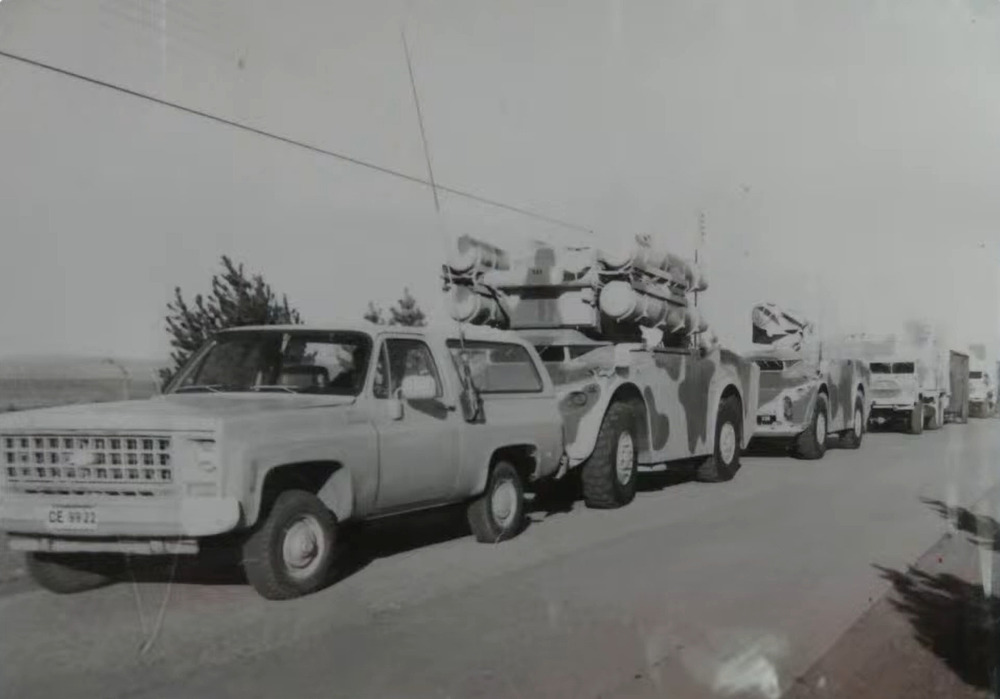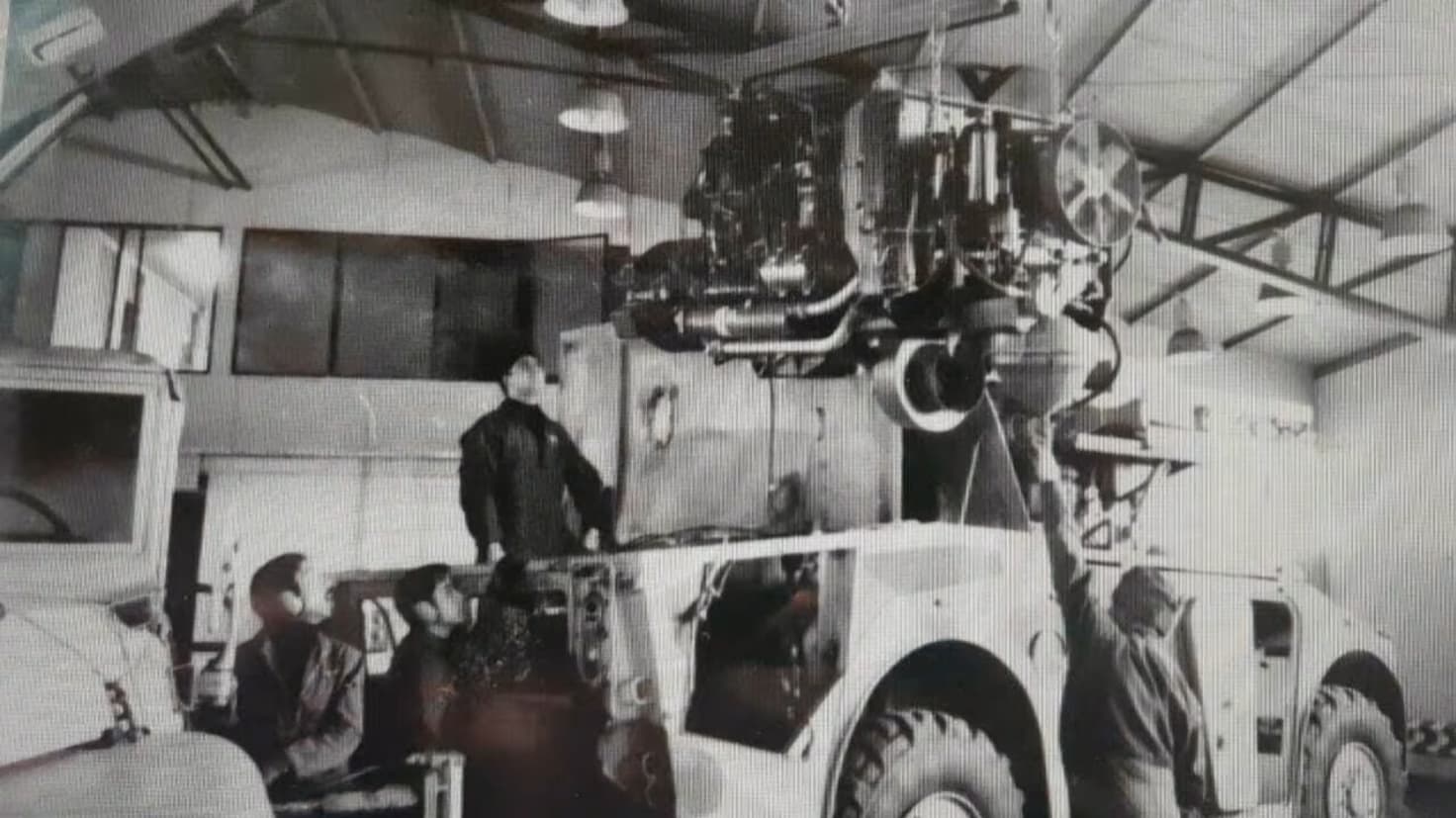- Yes
- No
Crotale 3000

History:
The Crotale system was born in 1964 as part of a collaboration between France and South Africa to develop a low-altitude surface-to-air missile system, with South Africa paying 85% of the development while France only 15%. After a few years, the system was It ended successfully and in 1971 some of these vehicles were sent to South Africa and called “Cactus”; France would also order these systems for itself as well during 1971. The Crotale system is mounted on a P4R (4x4) vehicle although it can also be ground mounted for fixed fenders. This system over the years developed different improved versions ranging from the 1000 series of 1969, 2000 of 1973, 3000 of 1975, 4000 of 1983 to the 5000 series of 1985, each one better than the previous one.
This system is made up of 2 vehicles, Both vehicles have an all-welded steel hull with the driver at the front, electronics and operator in the center and the thermal motor at the rear. The first vehicle is for acquisition where its main function is surveillance, identification and designation, in summary it helps to identify possible threats to a greater range and provide more information to the firing units, the second vehicle is the firing vehicle and the most important since the 4 Crotale R440 missiles are mounted on it, this vehicle has a computer is used to generate accurate data for confirmation of threat evaluation. Once the target has been detected the computer triggers the IFF interrogator and the final threat information is displayed. This computer is the same as in the acquisition unit, so it can fulfill this function by itself without depending on the acquisition unit.

The acquisition unit provides surveillance, identification and target designation. On top of the vehicle is a Thomson-CSF E-band Mirador IV pulse-Doppler radar with fixed echo suppression, rotating at 60 rpm and with a maximum detection range of 18.5 km against low-altitude targets with speeds between 35 and 440 m/s and altitude limits between 0 and 4,500 m. It also features an IFF interrogator-decoder, a non-saturable extractor, a real-time digital computer, a display console and a digital datalink for transmitting information to the firing units. Thirty targets can be processed per antenna revolution with 12 most dangerous targets automatically evaluated and tracked by the system.
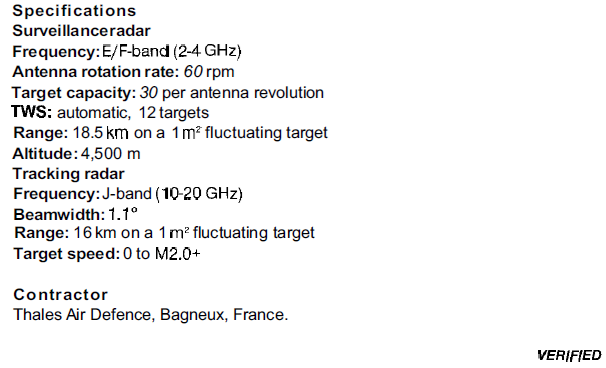
The firing unit has a J-band monopulse 17 km range single target tracking radar mounted concentrically with the launcher turret, which carries four ready to launch missiles, two each side. The system also has an l-band 10° antenna beamwidth command transmitter, infra-red gathering system with a 5° wide field-of-view, an integrated TV tracking mode as a low elevation backup, an optical designation tripod-mounted binocular device (which is controlled manually by a handlebar arrangement and used primarily in a heavy ECM environment or whenever passive operation is required), operating console and a digital data link. All the vehicles are fitted with an inter-vehicle link network to transmit data and orders by cable and for radio communication by a VHF radio-link.

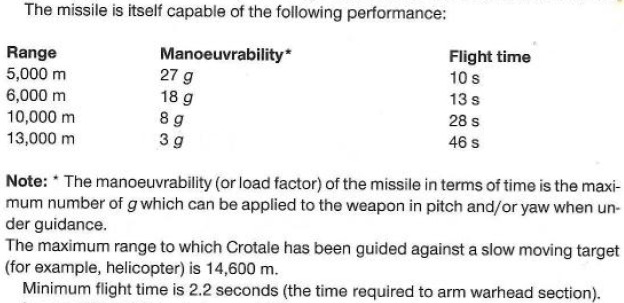
The radar can track one target and guide two missiles simultaneously. The missiles, fired 2.5 seconds apart, are acquired immediately after launch by the 1.1° tracking beam of the radar with the help of infra-red detection and radar transponders during the gathering phase. There is also an optronic system. Guidance signals are transmitted to the missiles by radio. No spare missiles are carried on the vehicle and fresh missiles are brought up by a truck and loaded with a light crane. A well trained crew that consisted of 3 people could reload four missiles in two minutes.
The history of the Crotale system in Chile stems from the country’s need to have a modern and powerful anti-aircraft system which was non-existent in the Chilean air force at the beginning of the 70s, which began to be of great concern for the South American country since that the tensions with its neighboring country of Argentina were getting closer to becoming something really worrying due to the Beagle conflict (dispute over 3 islands in the extreme south of Chile) that would reach its maximum tension as a result of the British arbitral award that would declare that these islands belong to Chile, for which reason Argentina would declare the judgment invalid, in this way and with great urgency the Chilean air force began negotiations in France for the purchase of the Crotale system in 1978, which would arrive in Chile a few years later when the The conflict with Argentina was at critical levels, this purchase would be known in Chile as the Jerjel Project and the purchase was finally made up of two acquisition units and four firing units that were destined for the Chabunco air base, Punta Arenas in southern Chile. Fortunately, the conflict between Chile and Argentina would be resolved thanks to the mediation of Pope John Paul II with said countries signing the Peace and Friendship Treaty in 1984. This missile system would operate in Chile for a few more years until the early 1990s when they were replaced by the Peugeot P4 Aspic missile system with mistral missiles.
The Crotale system (or Cactus in South Africa) is a powerful anti-aircraft system with large 150mm missiles and a large explosive payload (15kg HE) which means it will eliminate any threat it hits on the first hit, its maximum speed of 750m/s is also quite good considering the size and weight of the missile, the maximum overload of 27G will also help it maneuver well in addition to its range of almost 15km. All these features make it superior to all AA with missiles of BR 10.3 and below, for example the Russian Strela, although it is not as good compared to AA with higher BR missiles like the Chinese Tor-M1 of BR 11.0, so taking all this into account I think that its ideal BR is 10.7 at range 7, the system receives more value with the recent incorporation of the mechanics of being able to deploy the acquisition vehicles with search radar and the shooting vehicles separately so you could deploy 2 shooting vehicles and fire up to 8 missiles before reloading with the ammunition boxes. Its place for obvious reasons would be in the British tree under the South African service as Cactus in the BR that I explained above, France can also get the Crotale 5000 which was the best of the basic Crotale or can get the Crotale NG (Next Generation) which has better VT-1 missiles and in the Chilean service as Crotale 3000 would be very useful for the Israeli tree since they already have a large gap between the BR 9.7 and 12.0, implementing the Chilean sub-tree for Israel that I already suggested.
Specifications:
- Crew:
- 2 (Commander and driver)
- Armament:
- Primary: 4x R440 Crotale missiles
- Dimensions:
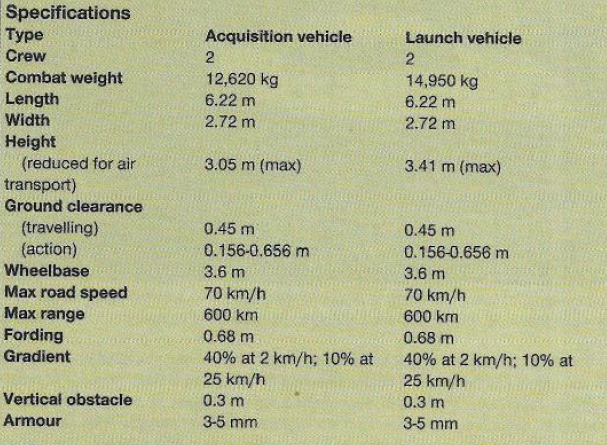
Photos:
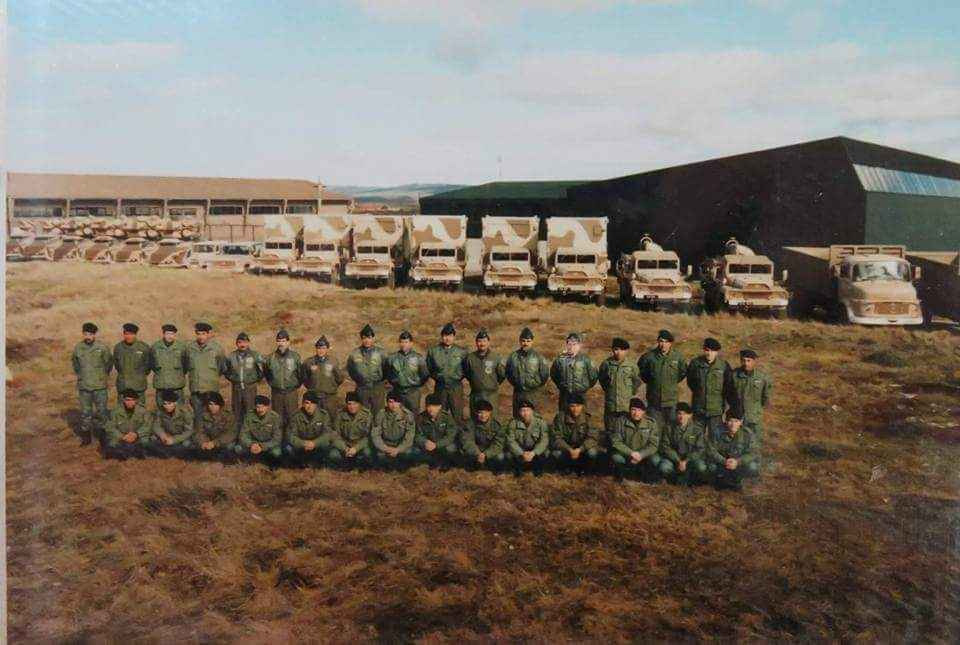
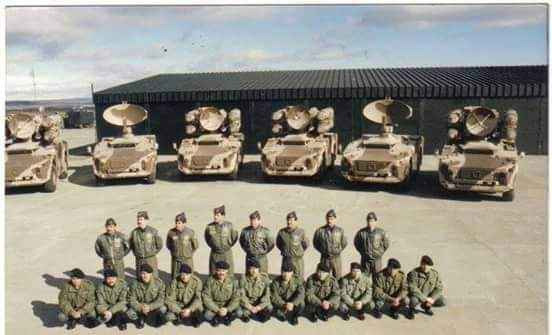
Sources:
- https://www.fach.mil.cl/images/biblioteca/rojo.pdf (page 251-252)
- Jane’s Land-Based Air Defense, 2002-2003
- Jane’s Radar and Electronic Warfare Systems 2002-2003



